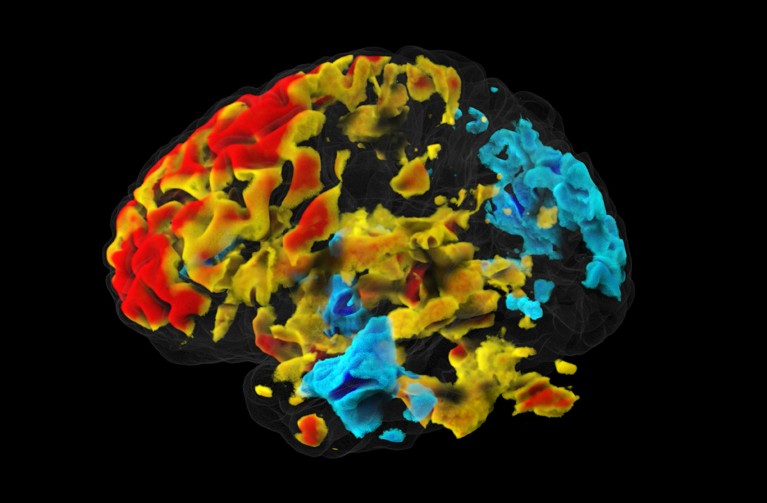- NEWS
- Correction 16 April 2024
- Clarification 16 April 2024
This fMRI technique promised to transform brain research — why can no one replicate it?

Coloured functional magnetic resonance imaging of a healthy brain at rest. Credit: Mark & Mary Stevens Neuroimaging and Informatics Institute/Science Photo Library
Access options
Access Nature and 54 other Nature Portfolio journals
Get Nature+, our best-value online-access subscription
$29.99 / 30 days
cancel any time
Subscribe to this journal
Receive 51 print issues and online access
$199.00 per year
only $3.90 per issue
Rent or buy this article
Prices vary by article type
from$1.95
to$39.95
Prices may be subject to local taxes which are calculated during checkout
doi: https://doi.org/10.1038/d41586-024-00931-x
Updates & Corrections
-
Correction 16 April 2024: An earlier version of this article incorrectly described the specific number of mice involved in one of Kim’s analyses — it was one mouse.
-
Clarification 16 April 2024: An earlier version of this story did not make clear what was causing the fluctuation in the MRI signal.
References
Toi, P. T. et al. Science 378, eabh4340 (2022).
Choi, S.-H. et al. Sci. Adv. 10, eadl0999 (2024).
Phi Van, V. D., Sen, S. & Jasanoff, A. Sci. Adv. 10, adl2034 (2024).

 Can brain scans reveal behaviour? Bombshell study says not yet
Can brain scans reveal behaviour? Bombshell study says not yet
 Faster MRI scan captures brain activity in mice
Faster MRI scan captures brain activity in mice
 Mind-reading machines are here: is it time to worry?
Mind-reading machines are here: is it time to worry?






